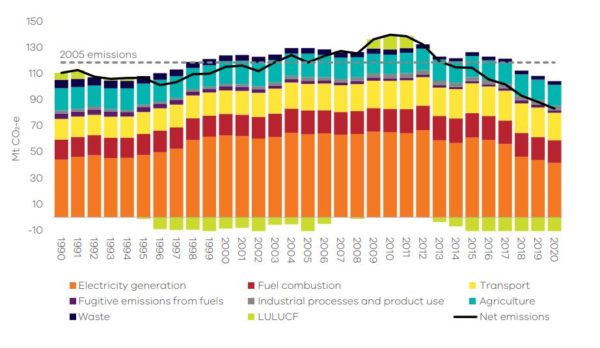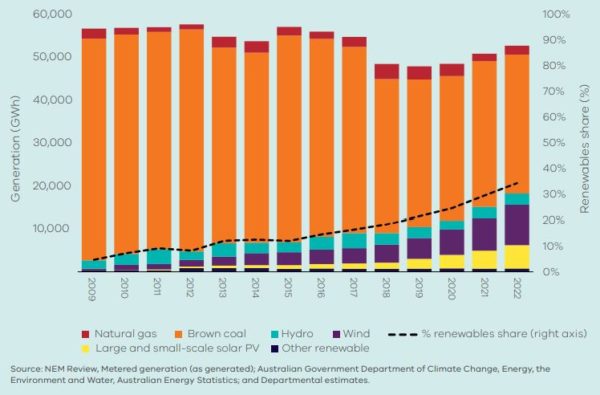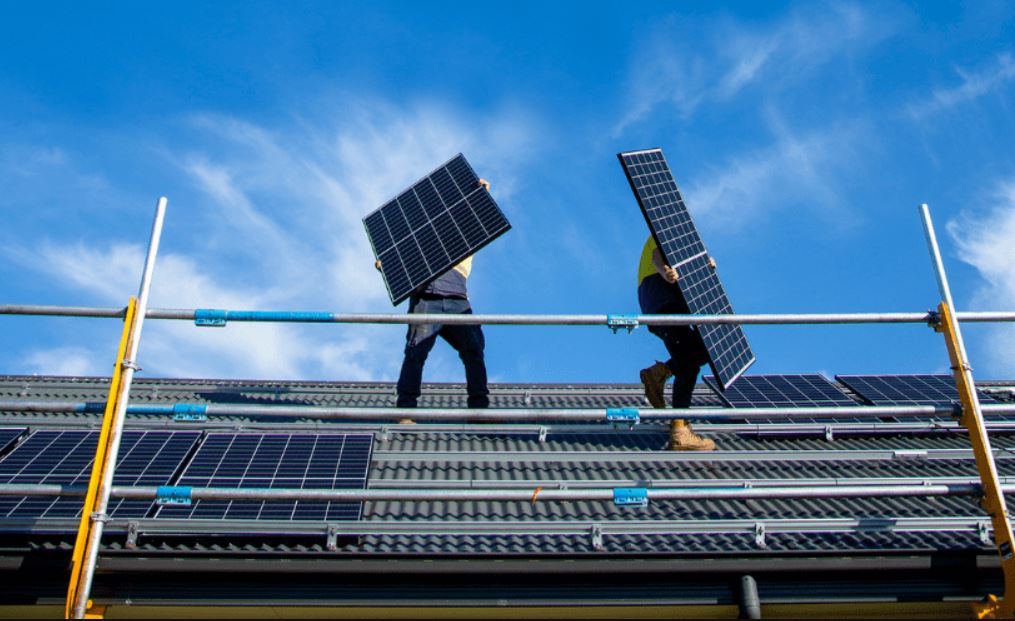The Victorian Greenhouse Gas Emissions Report 2020 shows the state reduced carbon emissions to 29.8% below 2005 levels in 2020 – well beyond the state’s target to cut emissions by 15 to 20%.
Victoria Energy Minister Lily D’Ambrosio on Tuesday pointed to a decrease in coal-fired generation and increase in renewable electricity production for the decline, saying the state is on target to achieve its goal of a 50% reduction in emissions by the end of the decade.
“Our nation-leading investment in renewable energy has helped us smash our 2020 emissions target – and we’re well on the way to reducing emissions by 50% by 2030,” she said.
“Changes to the way we generate electricity in this state were responsible for almost two-thirds of the cut to Victoria’s emissions between 2005 and 2020.”
The energy sector remains Victoria’s largest source of carbon emissions, with fossil fuel-fired generation accounting for 50.1% of the state’s total emissions in 2020 but it is also decarbonising the fastest, contributing almost two-thirds of the decrease in emissions during that period.
The Greenhouse Gas Emissions Report shows that Victoria’s emissions dropped 5.8% between 2019 and 2020, with the electricity sector accounting for a 4.9% decrease.

Image: Supplied
The report attributes that decrease to the transformation of the state’s electricity system, which saw renewables jump from 22% to 25% of Victoria’s electricity consumption between 2019 and 2020, while the state’s share of energy generation hit a new high of 34% renewables in the 2021-22 financial year.
As of June 2022, there was a total of 9,624 MW of renewable capacity operating in Victoria, including 1,243 MW of large and commercial-scale solar, and 3,446 MW of rooftop solar PV.
The report says a further 1,998 MW of solar and wind power is under construction or being commissioned. In addition, renewable energy projects totalling 26,094 MW have been announced or are in early stages of development.
The report highlights that rooftop PV is playing a key part in the renewable energy transition with hundreds of thousands of small-scale solar systems installed and contributing the third largest share of generation behind coal and wind in 2021-22. From 2001 to 2018, about 384,000 rooftop systems with a combined capacity of 1,564 MW were installed in the state.

Image: Supplied
And with Victoria’s brown coal-powered electricity generators gradually being decommissioned, the pace of renewable energy installation and use is accelerating. From January 2019 to May 2022 there was a “dramatic increase” in the installation of small-scale systems with 236,000 systems installed with a combined capacity of 1,845 MW – more than doubling the installed capacity of rooftop solar systems in Victoria.
D’Ambrosio said the increase in renewables means Victoria remains on track to meet its 2030 target of 50% renewable energy, paving the way to a 50% reduction in emissions by the end of the decade and the legislated target of net-zero emissions by 2050.
“Shifting Victoria’s energy system towards renewables as fossil-fuelled electricity generators retire has had a significant impact on our emissions,” she said. “Our strong targets to bring online more renewable energy – including Australia’s first offshore wind targets – will help us to keep moving toward our 2030 target to halve Victoria’s emissions.”
The Victorian government is due to set an interim 2035 emissions reduction target in March following advice of an independent panel announced as required by the Climate Change Act.
This content is protected by copyright and may not be reused. If you want to cooperate with us and would like to reuse some of our content, please contact: editors@pv-magazine.com.









2 comments
By submitting this form you agree to pv magazine using your data for the purposes of publishing your comment.
Your personal data will only be disclosed or otherwise transmitted to third parties for the purposes of spam filtering or if this is necessary for technical maintenance of the website. Any other transfer to third parties will not take place unless this is justified on the basis of applicable data protection regulations or if pv magazine is legally obliged to do so.
You may revoke this consent at any time with effect for the future, in which case your personal data will be deleted immediately. Otherwise, your data will be deleted if pv magazine has processed your request or the purpose of data storage is fulfilled.
Further information on data privacy can be found in our Data Protection Policy.